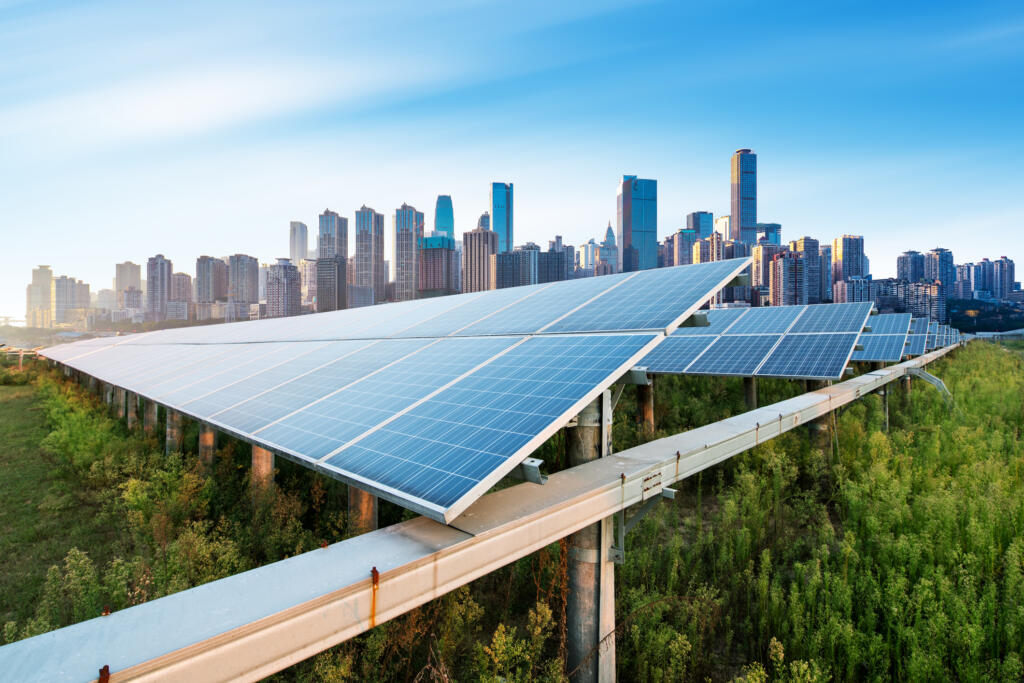
Could redeveloping brownfield land for green power help the UK hit its net zero target? Potentially, yes. So, why choose brownfield?
The UK’s ambitious net-zero carbon emissions target will require a sea-change in how energy is generated, stored and managed. In a move to reduce greenhouse gases and become a low carbon economy, fossil fuel generation is being replaced by solar, wind, biomass and geothermal “renewable” technologies.
Critical to the phasing out of reliance on carbon fuel is the continued identification of economically and geographically viable renewable energy sites. The evolution of a green energyscape by recycling industrial land (so called brightfield land) for clean energy projects is fast gaining momentum, and for good reason.
Until now, a huge obstacle to the growth of green power in the UK has been the issue of obtaining suitable land on which to erect wind turbines and solar PV arrays. Lack of availability, local opposition, ecological concerns, planning constraints, transmission losses, the cost of transporting electricity over distances and providing supporting infrastructure are among the barriers. Brownfield land could provide the answer.
What is brownfield land?
Brownfield land is land which has previously been developed and not currently in use that is potentially (although not always) contaminated. Such sites include former industrial buildings, landfill sites and abandoned mines (if not subject to restoration conditions).
As contamination could be present, extensive investigation and remedial action are likely to be required before redevelopment can take place. Such barriers to development have meant that many brownfield sites in the UK have remained vacant long after they fell into disuse, often for as long as 30 years.
2016 brought “brownfield land registers”, primarily to free up alternative development sites in order to meet aggressive house building targets. But the outlay for decontamination work involved in building houses on brownfield land, combined with their geographic location (typically industrial areas with lower housing demand and prices) made many sites cost prohibitive for traditional developments.
So, why brownfield?
Higher availability
Brownfield land offers many advantages over traditional greenfield sites, the first of which is sheer availability. It is estimated there are 2-4 million hectares of brownfield land in Europe, and over 70,000 hectares in the UK alone with land prices often far cheaper than greenfield sites.
It is more sustainable to reuse old sites
The idea of land reuse and repurpose is congruous with sustainability principles. Arguably, local community objections on the grounds of visual impact, siting conflicts and ecological concerns could be fewer and less vociferous.
The more we use brownfield sites to build renewable energy installations, the less we take up undeveloped greenfield sites and this has a positive knock-on effect on local ecology and natural habitats.
Brownfield land presents an opportunity
Given the relatively small amount of land available here in the UK, it makes perfect sense to bring forward under-utilised and unproductive land for productive use, generating new income, tax revenue and jobs for the local economy.
Certain sites, which have previously been unfeasible for any type of development (for example, landfill sites or disused mines) are prime development opportunities.
Solar energy projects (which leave the ground relatively undisturbed) could use innovative design features such as ballasted racking systems to secure PV panels without disturbing potential contaminants beneath the array.
Landfill sites in particular tend to be elevated, while brownfield sites are typically cleared of above ground structures. Both offer unshaded, unobstructed positions (often highly proximal to existing grid infrastructure) which lend themselves to optimal solar output and/or siting of wind turbines.
Examples include the former Veolia landfill site at Netley in Hampshire, which now produces 12MW power. Good Energy’s brownfield sites include Crumps Yard, which has previously been used as a chemical works, and a landfill site at Flint.
Better connected to infrastructure
Brownfield sites tend to be closer to existing infrastructure (including roads, transport and grid connections) and to areas of high energy demand. This assists not only in construction, ongoing operation and maintenance, but also in subsequent grid connection.
Benefits local community
Construction, installation, operation and maintenance work all create local jobs in former industrial areas and provide a much needed boost to the local economy. Requisite clean-up of contaminated sites ahead of development also help repair the natural environment and minimise public health risk.
Financial benefits of taking on a brownfield site
Financial incentives and preferential planning status may be available to return brownfield sites to productive use and stimulate local regeneration of former industrial areas. For example, in Wales developments of up to 25MW on a brownfield site are actively encouraged. Elsewhere, Local Planning Authorities are encouraged to consider brownfield sites ahead of greenfield sites.
There may be additional benefits in the form of lowering energy costs. Here in the UK, space heating comprises more than 40% of domestic energy consumption.
The charity National Energy Action estimated last year that by April 2023 7.5 million households in the UK live in fuel poverty in England (households which have above average energy costs with a residual income below the poverty line once fuel bills are paid). By using brownfield land to install ground source heat pumps or locally used biomass, it can help provide low-cost energy in areas which need it the most.
Potential challenges with brownfield land
Developing a brownfield site is not, however, entirely without difficulty. Local community opposition could still prove a stumbling block. There will always be site specific constraints – it goes without saying that solar installations will require adequate access to sunlight and wind turbines require a suitably elevated position.
Trees, surface water, slopes, protected species and the nature/degree of any contamination are all factors in determining whether a site is viable.
Ultimately, repurposing of brownfield sites for clean power projects will come down to whether sufficient energy can be generated, and sold at the right price back to the grid to cover the cost of development and maintenance.
However, if the answer is yes, brightfield installations could be a key factor in meeting our net zero carbon emission targets in years to come.
